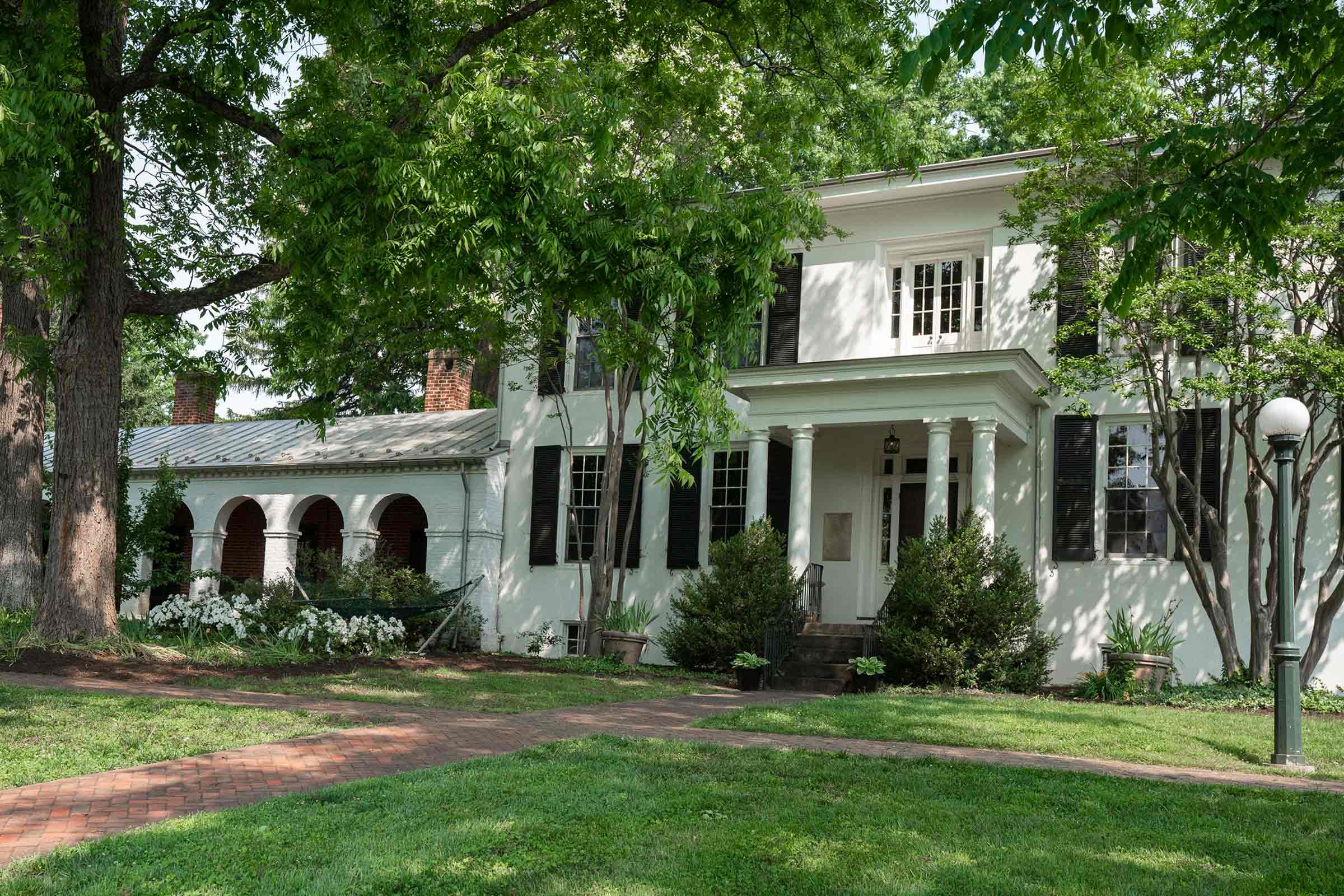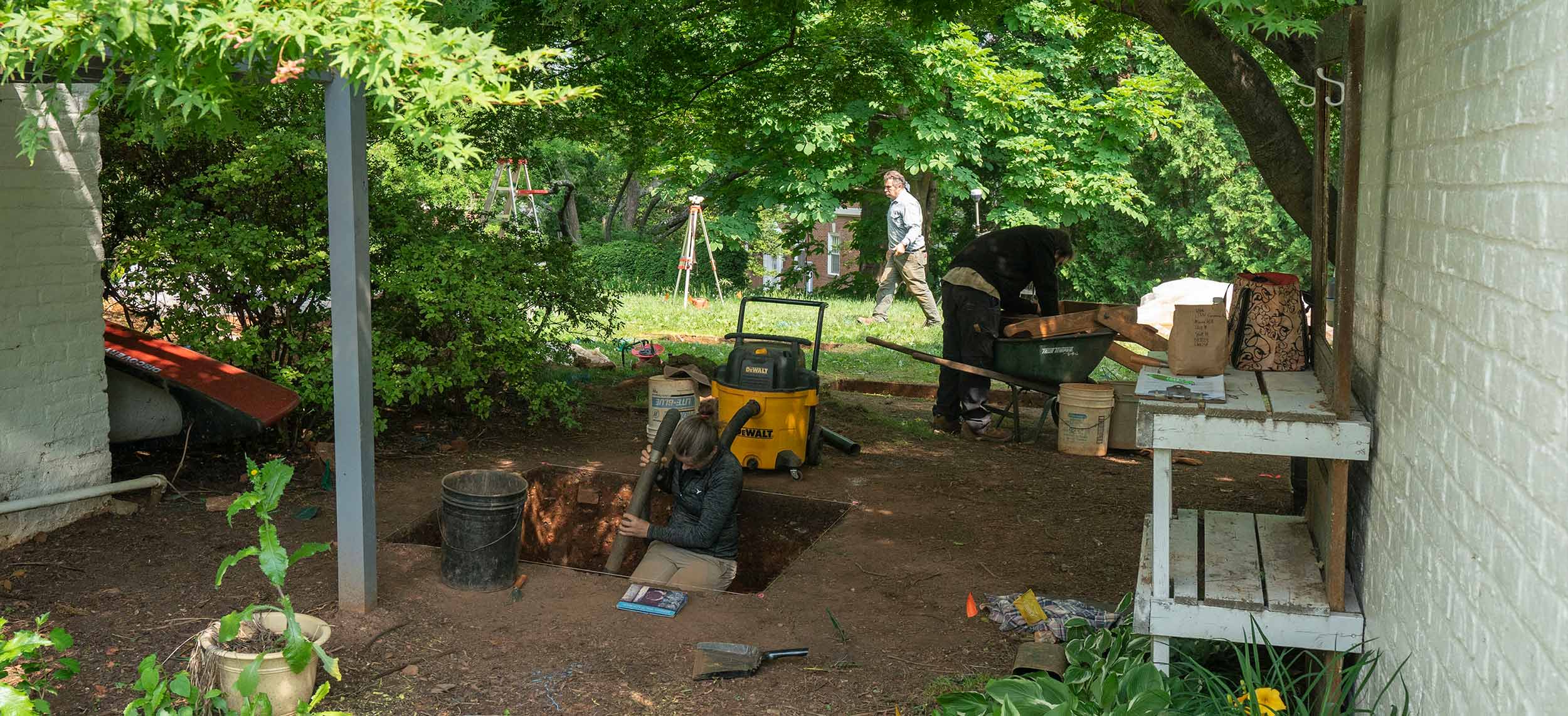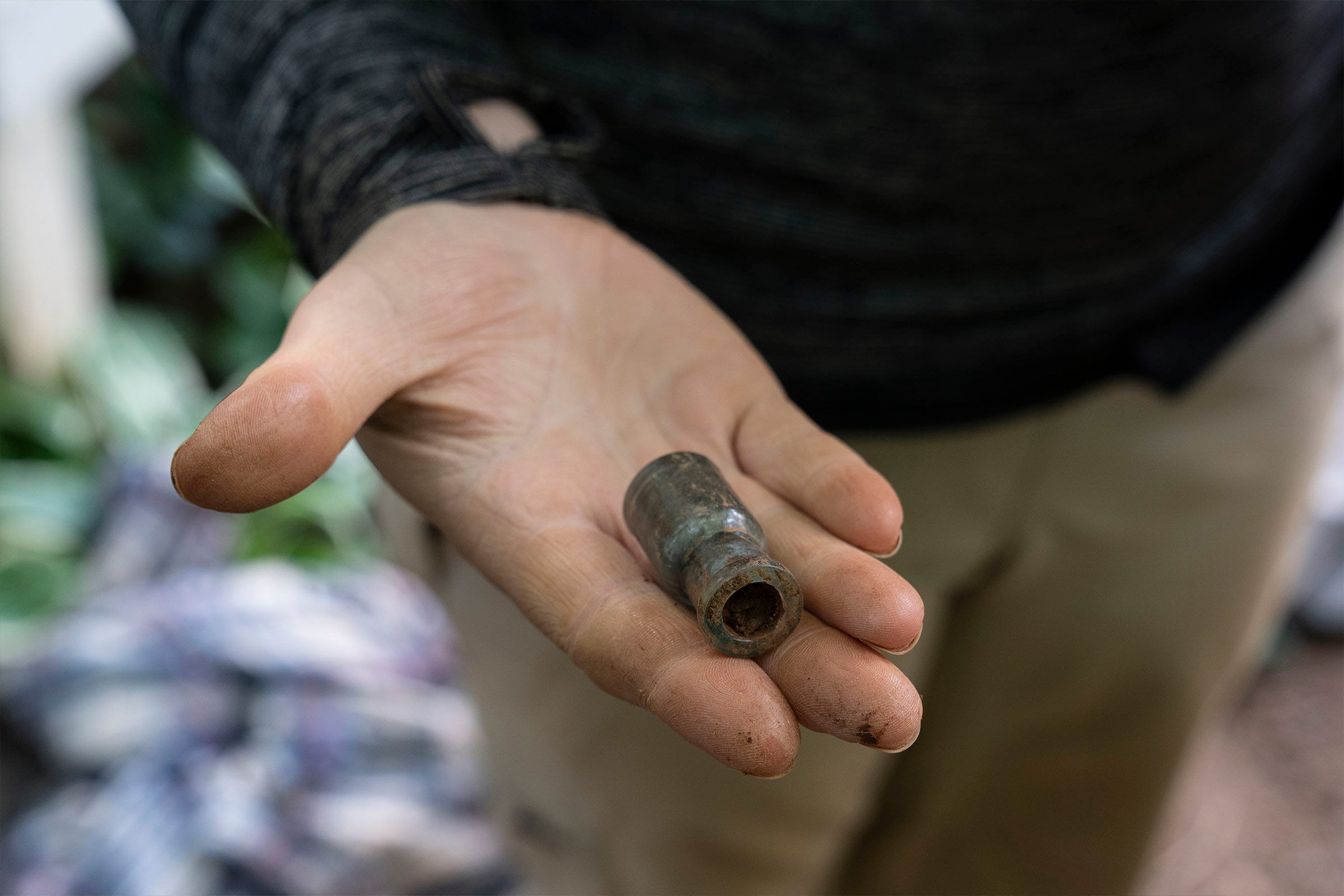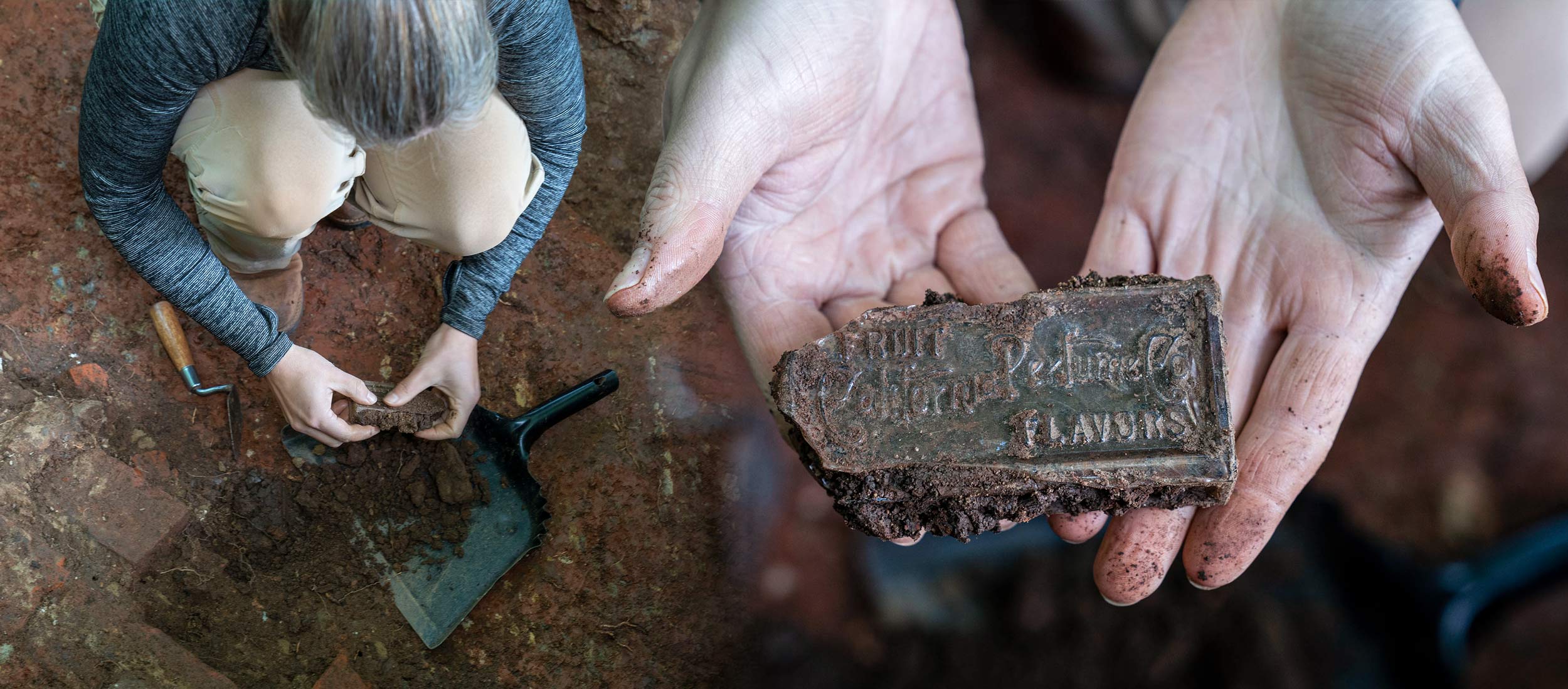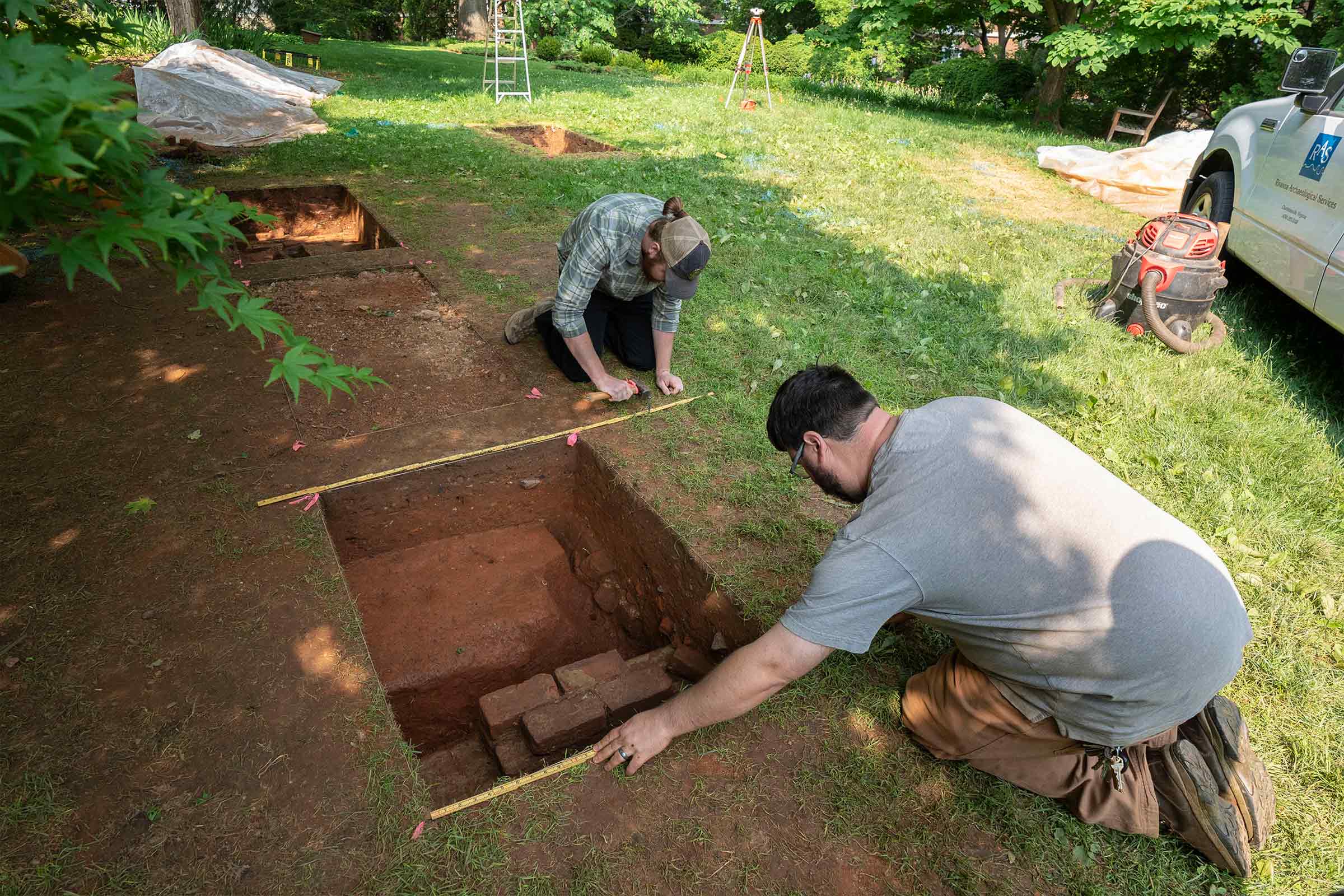Archaeologists recently uncovered what may be the foundation of a summer kitchen at Monroe Hill House, the oldest extant building on the University of Virginia Grounds.
The find, the historic value of which will take months to analyze, intrigued the archaeologists.
“There’s a tiny, complete glass bottle,” Susan Palazzo of Rivanna Archaeological Services, said. “I don’t know what it would have held, but it’s the cutest bottle I’ve ever seen, and what looks like a gear from a clock. I also found what looks like a piece of green oval glass that was maybe set into a ring. And there were several pieces of small pharmaceutical bottles, a couple of glass pipettes, which we would think of as lab ware. I suppose they could have a kitchen use, for use with extracts or something.”
